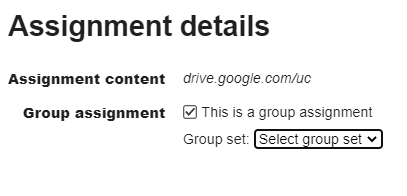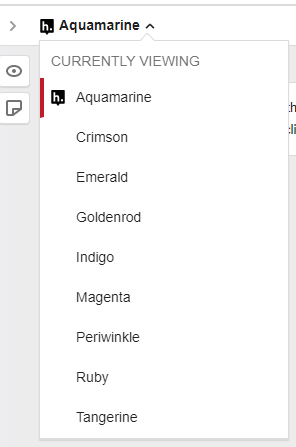
This blogpost is the second post of Teaching with Hypothes.is (a three-part series).
One way to use Hypothesis (a social annotation tool) is to help students understand how to apply writing concepts and conventions. Although two examples from writing-related online courses will be showcased in this post, most courses have writing components. Leveraging Hypothesis in your course might help your learners become better skilled at writing term papers, as well as crafting scientific reports, communicating with clients and developing grants, which are goals of many disciplines.
Getting students to watch faculty videos: A scaffolded approach to teaching writing components
Dr. Christopher Schott, an UMSL assistant teaching professor and the Writing Center coordinator sees Hypothesis as a means to build in the opportunity to get his students to watch the videos he creates. In his traditional face-to-face classes, he would discuss different components of writing an introduction. This way of presenting content is difficult to replicate online. To accomplish this, he believes having students interact with the text first helps them pay more attention to his responses which come second.
In his introductory writing course, one activity is having students write an introduction based on 8 components from course content. This is how the activity can be set up using Hypothesis:
- Week 1: Students are provided multiple introduction paragraphs. (The exemplars are uploaded as one document in Hypothesis. The introductions shared are on a range of some of them not meeting the requirements, to fully including the eight components.) Students post their thoughts and comments about which introduction has the components they are learning and which do not. The initial post is completed by Thursday, and they interact with their peers by Sunday.
- Week 2: Dr. Schott posts his annotation of the same exemplar text. He explains some sections using clips of his videos in the annotations. Students are more attentive because they want to see which ones they “got right.” They watch the videos and use the faculty-posted annotations to create an introduction draft by Thursday.
- (Week 2 continued): Submitted paragraphs are collected into one document. The student writing is posted anonymously. By Sunday, everyone gives feedback referencing the same 8 components highlighted by Dr. Schott.
Having students craft feedback responses in two parts: Using specific criteria and a conceptual text
In the online graduate course of literacy assessment and teaching, Dr. Katherine O’Daniels already has the class in learning groups set up in Canvas. In a group assignment, students evaluate and provide written feedback for three writing samples. Students annotate a document that includes K-12 students’ writing.
First, in their annotations they evaluate the writing using specific criteria they are learning in the course. Then they study an additional text about crafting feedback, and in their annotations, they provide written feedback as a K-12 teacher would in a classroom setting.
- Part 1: Evaluate the Writing Using the Six Traits Model - Due Dec. 6
- Part 2: Provide Written Feedback in Response to Writing - Due Dec. 13
In Part 1, Dr. O’Daniels directs students to the course material that explains how to evaluate each student writing sample in relation to Ideas, Organization, Voice, Word Choice, Sentence Fluency, and Conventions.
She then asks the graduate students to identify 2–3 things in each student writing sample that are either strengths or areas of opportunity for improvement for the writer.
The assignment requirements are:
- Comment on all three pieces of student writing.
- Have a minimum of 6 total annotations.
- Have at least one annotation fro each of the six traits.
- Tag your annotations using the following labels:
Ideas, Organization, Voice, Word Choice, Sentence Fluency, and Conventions.
In Part 2 of the assignment, Dr. O’Daniels directs her graduate students to the course material that explains how to use "long language" to crack open the six traits and respond "with eyes for the beauty and brilliance that exists in every piece." The idea here is to imagine what you might say if you were talking directly to the student during a writing conference. The group assignment requirements include two steps:
Step 1:
You can use the Hypothesis tags to filter what your teammates said in relation to each of the six traits in order to craft your feedback.
- Provide "long language" annotations in response to at least two students.
- Tag your annotations with the label - long language.
Step 2:
Share one specific next step in relation to ideas, organizations, voice, word choice or sentence fluency that this writer (the student, not your teammate) could work on to continue growing as a writer and why this makes sense for this student.
- Use the reply button to respond to one of your teammates' annotations.
- Tag your response with the label - peer response.
Setting up groups in Hypothesis
Dividing your class into smaller groups for these types of annotation assignments can be helpful because it keeps the annotations on a single document from becoming overwhelming to the reader. It can also provide opportunities for learners to get to know each other in a community-building context. Setting up the groups is quick and painless.
 After you select content for your Hypothesis assignment given the options to choose from, you will be able to choose if it is a group assignment and select your group set.
After you select content for your Hypothesis assignment given the options to choose from, you will be able to choose if it is a group assignment and select your group set.
 From the instructor view of Hypothesis, you will be able to have access to all the course groups (Dr. O’Daniels has group names labeled as colors). However, students will only see the group they belong to.
From the instructor view of Hypothesis, you will be able to have access to all the course groups (Dr. O’Daniels has group names labeled as colors). However, students will only see the group they belong to.
Additional resources:
Using Tags to Create Hypothesis Reading Groups: Hypothesis
Using Tags Tutorial: Hypothesis
Link to first Hypothesis blog
How do you see Hypothesis fitting into your course?
How would Hypothesis streamline teaching the writing components in your class?
Share your course ideas with us (Mardi@umsystem.edu).
- Fatemeh Mardi, Instructional Designer at Missouri Online
- Jerod Quinn, Higher Ed Instructional Designer
